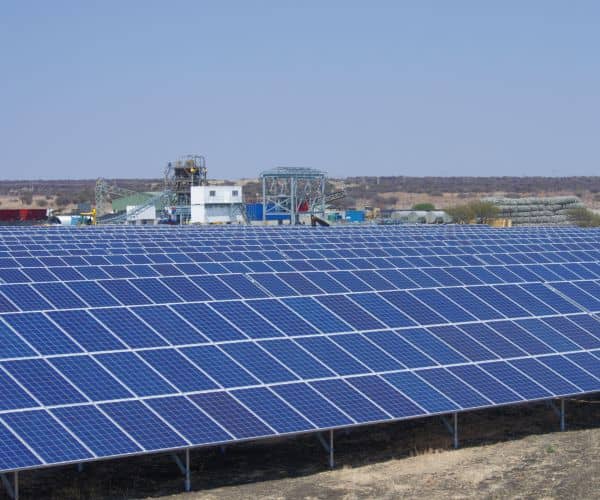 Mining companies are increasingly gaining interest in solar power because, frequently, photovoltaic generation is more cost-competitive than conventional energy solutions – especially in remote locations that are not grid-connected.
Mining companies are increasingly gaining interest in solar power because, frequently, photovoltaic generation is more cost-competitive than conventional energy solutions – especially in remote locations that are not grid-connected.
However, the engineering requirements for solar-diesel hybrid systems are much more complex than those for grid-connected solar. This is the conclusion of a new study by Germany-based energy consultancy THEnergy with the cooperation of CRONIMET Mining Power Solutions GmbH (CRMPS).
The study – based on 26 interviews with mining and energy industry experts from Africa, Australia and Europe – shows the importance of considering both the demand side and supply side at the same time.
The study shows that on the demand side, energy-efficiency measures and load shifting can have substantial effects on the electricity consumption of a mine. Energy efficiency can account for electricity reductions of 5% to 20%, while load shifting can yield energy cost savings of 5% to 10%.
On the supply side, typical cost savings from adding PV generation typically range from 25% to 30%. In very remote locations with elevated diesel prices, the savings can amount to more than 70%.
"Mining process and solar experience allow for creating tailor-made solutions,’ says Rollie Armstrong, managing director of CRMPS. ‘In the end, the customers profit by spending less.’
CRMPS has built a megawatt-scale solar-diesel hybrid power plant at its affiliate's Thabazimbi chromium mine in South Africa.
Energy-efficiency measures and load shifting require a thorough knowledge of mining processes, the report concludes. Thomas Hillig, founder of THEnergy, says the simultaneous optimization of the demand and supply sides of an operation is much more complex than the construction of a traditional PV power plant. A prerequisite for finding the best solution is combining skills from both worlds. ‘The study is an excellent example to show how complexity is increasing if solar energy moves toward major industrial consumers,’ he says.
The THEnergy and CRMPS study can be downloaded here.

